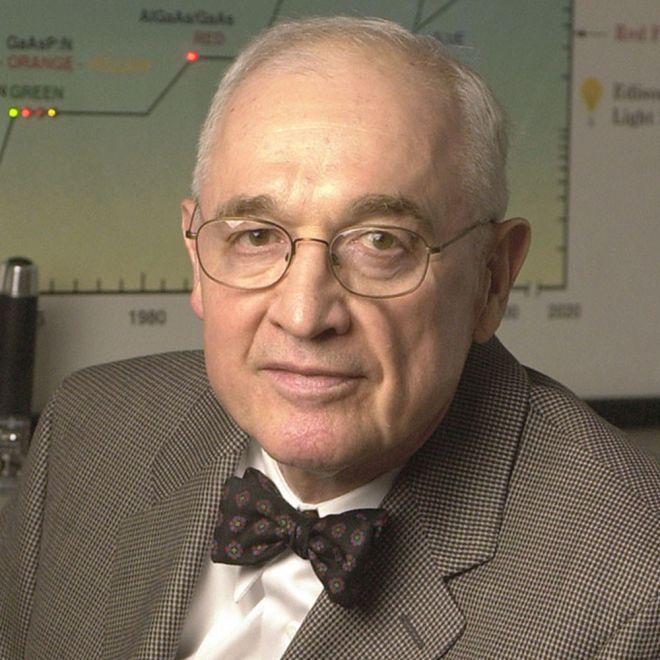About
24 January 2022
Optica Congratulates 2021 Queen Elizabeth Prize Recipients Shuji Nakamura, Nick Holonyak, Jr. and Russell Dupuis
Three Optica members are honored for the creation and development of LED lighting

Caption: Nobel Laureate Shuji Nakamura
WASHINGTON — Optica, the society advancing optics and photonics worldwide, celebrates the achievements of three members who have been awarded the 2021 Queen Elizabeth Prize for Engineering (QEPrize). Nobel Laureate Shuji Nakamura and Optica Fellows Nick Holonyak Jr. and Russell Dupuis, are among the winners of the QEPrize for the creation and development of light-emitting diodes (LEDs). Their contributions to this technology have had wide-ranging effects, laying the foundation for solid-state lighting technology and reducing global energy consumption to address climate change.
“The Queen Elizabeth Prize for Engineering is an incredible honor for any researcher to receive. It highlights the global impacts of innovative engineering,” said Elizabeth Rogan, CEO of Optica. “On behalf of Optica, I congratulate Drs. Nakamura, Holonyak and Dupuis as well as the other 2021 QEPrize winners. Their work in developing LEDs has transformed the lighting and electronics industries and has contributed to a more sustainable society.”

Caption: Optica Honorary Member and Fellow Nick Holonyak Jr.
“I am honored and humbled by the recognition that has been bestowed on me with this award,” said Dupuis. “I want to thank Her Majesty The Queen for recognizing the importance of our work and, more generally, the importance of engineering to society by establishing this award. It is especially important to me that this is a ‘team award’ that I get to enjoy with my close friends and colleagues, especially with my PhD advisor, Prof. Nick Holonyak, Jr.
The QEPrize is awarded biannually for “ground-breaking innovation in engineering which has been a global benefit of humanity.” Nakamura, Holonkyak and Dupuis share the 2021 QEPrize with Isamu Akasaki and M. George Craford. Previous winners include the inventors of the global positioning system and digital imaging sensors.
About Dr. Shuji Nakamura
In 1979, Shuji Nakamura joined Nichia Corporation, a chemical and electronics company based in Tokushima, Japan, where he conducted work that would later earn him the 2014 Nobel Prize in Physics along with Isamu Akasaki and Hiroshi Amano. He developed a two-flow MOCVD system for gallium nitride growth, giving rise to the creation of blue LED, which was a major development in the lighting industry. His work has been foundational to other technologies such as white LEDs that can be used for efficient home lighting, and blue laser diodes used in Blu-ray and other high definition DVDs.

Caption: Optica Fellow Russell Dupuis
Dr. Nakamura has been recognized with numerous honors including the Benjamin Franklin Medal in Physics, the Global Energy Prize, and the Mountbatten Medal. He is currently a professor at the University of California, Santa Barbara.
About Dr. Nick Holonyak Jr.
Nick Holonyak Jr., who is known as the “Godfather” of LEDs, developed the first visible-light light emitting diode—which was red—in 1962 at General Electric’s research laboratory. Holonyak’s research in semiconductors containing three to four elements that could be created to have specific properties also contributed to the modern LED industry, allowing for the development of improved white LEDs. He holds 41 patents.
Since leaving GE in 1963, Holonyak has been a professor at the University of Illinois at Urbana-Champaign, where he is the John Bardeen Endowed Chair Emeritus in Electrical and Computer Engineering and Physics. Holonyak, an Optica Honorary Member, and has been recognized with the National Medal of Science, the Japan Prize, the Global Energy International Prize, and many other honors.
About Dr. Russell Dupuis
Russell Dupuis was the first to demonstrate a technique that enables today’s most advanced white LEDs to operate: while working for Rockwell International from 1975 to 1979, Dupuis showed that MOCVD could be applied to semiconductor thin films and devices to create high-performance LEDs. This technology was adopted by many other companies and is also used for the production of solar cells and other high-frequency electronics.
Dupuis is the Steve W. Chaddick Endowed Chair in Electro-Optics at the Georgia Institute of Technology in electrical and computer engineering. He has received the 2002 National Medal of Technology, the 2007 IEEE Edison medal, and others for his contributions to commercializing LEDs.
About Optica
Optica, Advancing Optics and Photonics Worldwide, is the society dedicated to promoting the generation, application, archiving and dissemination of knowledge in the field. Founded in 1916, it is the leading organization for scientists, engineers, business professionals, students and others interested in the science of light. Optica's renowned publications, meetings, online resources and in-person activities fuel discoveries, shape real-life applications and accelerate scientific, technical and educational achievement. Discover more at: Optica.org
Media Contact
